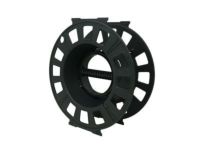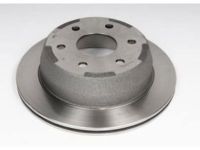
Why choose GMPartsGiant
- Large Inventory
The best site to buy GMC Safari genuine parts for years has been GMPartsGiant.com. We're the best online parts and accessory store for your GMC Safari. GMPartsGiant.com offers a large parts and accessory inventory to cover all your vehicle's repairs. Feel free to browse through our genuine GMC Safari parts and accessory catalog to find all your vehicle's needs.
- Fast Shipping Times
All of our GMC Safari auto parts and accessories are expedited directly from verified dealers and backed by the manufacturer's warranty. Our experienced team ensures the orders are packed to provide quick transit times. The majority of the orders are shipped out within a couple of business days to get the parts out to you as fast as possible.
- Low Prices
Our low prices say it all. You can rest assured that you will always receive unbeatable prices on OEM GMC Safari parts. Our giant inventory is beyond compare and has everything you need at an extraordinary value not found anywhere else. Whether you're restoring an old vehicle or upgrading the performance of your vehicle you can count on the quality of our products without hurting your bank account.
Popular Genuine GMC Safari Parts
- Engine Parts View More >
- Fuel System, Exhaust, Emission System Parts View More >
- Brakes Parts View More >
- Transmission - Automatic Parts View More >
- Frames, Springs, Shocks, Bumpers Parts View More >
- Cooling System, Grille, Oil System Parts View More >
- Front Axle, Front Suspension, Steering Parts View More >
- Front End Sheet Metal, Heater Parts View More >
Shop Genuine GMC Safari Parts with GMPartsGiant.com
The GMC Safari, also known globally as the Astro, was a multifaceted van manufactured by the General Motors from 1985 to 2005. The van was launched as the automaker's first minivan and was designed to be versatile, offering multiple configurations including a passenger minivan and a cargo van. Using a rear-wheel-drive chassis, the Safari incorporated light-truck powertrain components to optimize cost-effectiveness and improve towing capacity up to 2,500 kg. The engines and transmissions were sourced from the S-10 with options ranging from a 2.5 L four-cylinder producing 98 hp to a 4.3 L V6 delivering 200 hp, depending on the model year. In 1986, throttle body fuel injection (TBI) was introduced for improved performance and fuel efficiency. The van was fitted with a Borg Warner T-5 manual transmission, with all subsequent models from 1993 boasting a 700R4/4l60 automatic transmission. The Safari underwent several changes over the years, including a 1995 facelift with an extended nose and a redesigned dash with a passenger-side airbag in 1996. Despite these upgrades, the van retained its original square sealed beam headlights. Measuring 189.8 inches in length, 75 inches in height, and 77.5 inches in width without mirrors, the GMC Safari offered considerable space. Its fuel economy was rated at 14 mpg in the city and 20 mpg on the highway. Over its production span, about 3.2 million units were produced, marking the Safari as a significant model in the history of General Motors.
GMC Safari, a popular van among vendors, caterers, and travel enthusiasts, is not immune to common vehicular issues. Prominent among these is the Dexcool issue, linked with engine problems and reported by Safari drivers typically around the 28,000 miles mark. Symptoms include slow acceleration, overheating, a rough-running engine, unusually loud exhaust, poor fuel economy, and starting difficulties. If the Check Engine Light activates, consider checking components like the spark plug, engine mount, water pump, EGR valve gasket, speedometer, and oil pan. Another frequently reported problem involves the transmission not shifting correctly, often manifesting as transmission slippage and surging, partial power loss, abnormal engine noises when switching gears, difficulty in shifting, and a higher-than-usual engine RPM. Typically, this issue stems from a faulty torque converter, broken shift cable, or malfunctioning oil pressure switch. Additionally, the axle shaft and drive shaft warrant attention due to their vulnerability, while the cabin air filter-essential for venting fresh air into the vehicle-should also be adequately maintained.
Selecting OEM parts provides assurance as they are synonymous with top-notch quality and longevity. They are meticulously engineered to meet the official factory's stringent specifications and undergo rigorous quality control tests during manufacturing, ensuring durability and a perfect fit. Our extensive inventory offers genuine GMC Safari parts, like Transmission - Manual, Rear Body Structure, Moldings & Trim, Cargo Stowage at the most competitive prices online. These OEM GMC Safari parts, such as Transfer Case are backed by a manufacturer's warranty. To top it off, our stress-free return policy and expedited delivery services guarantee an excellent shopping experience.
GMC Safari Parts Questions & Answers
- Q: How to remove the motor and transmission mount on GMC Safari?A: To eradicate the mount from a vehicle, start by hoisting the vehicle and securely supporting it on jackstands. Then, use a floor jack and a block of wood to support the transmission. Next, remove the nut on mount-to-support bracket along with two nuts and bolts on cross-member support brackets. After that, remove the two bolts mounting transmission brace to engine rear. Proceed to remove the two upper insulators between bracket supports. Slide out bracket support with its mount away from cross member and over transmission. Lastly, draw out mount off its support bracket plate downwards while holding it firm at all times during this process. To reinstall the mount, just do what is recommended in reverse order for removal.
- Q: How to inspect and replace the Brake Disc on GMC Safari?A: To start inspecting the brakes, loosen the wheel lug nuts and raise the vehicle with jackstands. Next, remove the wheel and then brake caliper making sure not to disengage it from brake hose. Look on disc's surface for any score mark or damage, if deep score marks above 0.015 inches exist disk needs to be removed and refinished. It is also important to check using a dial indicator for disc run-out; ensure that this does not exceed the stipulated limit. Using a micrometer measure disc thickness; make sure it is not less than specified minimum refinish thickness. For removal, on 2003 and later models, remove the caliper mounting bracket and slide off the disc from hub. On 2002 and earlier models, install the disc and hub assembly then adjust your wheel bearings . On 2003 onwards place disc onto hub followed by installation of calipers mounting bracket first then brake pads.


















































